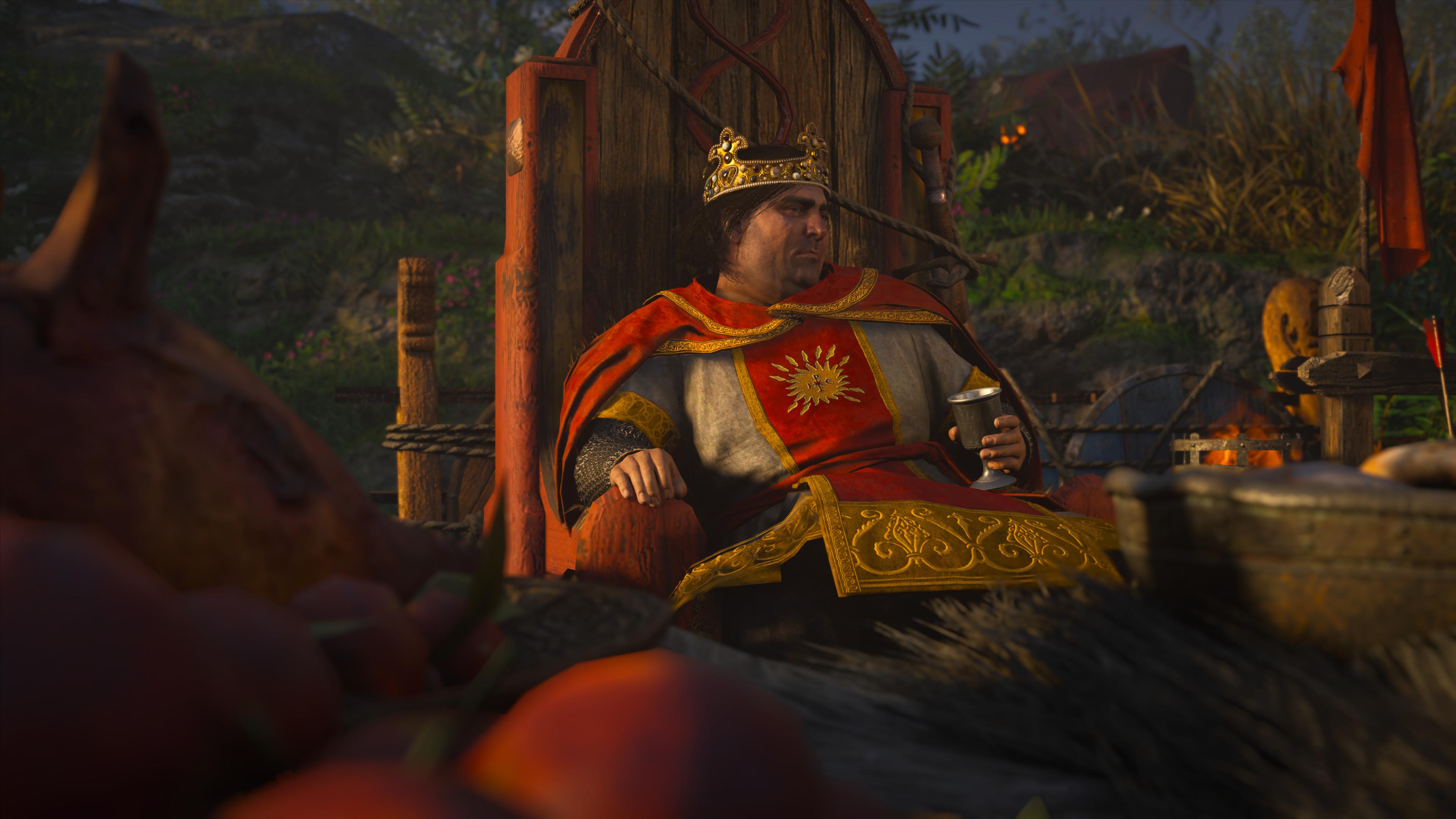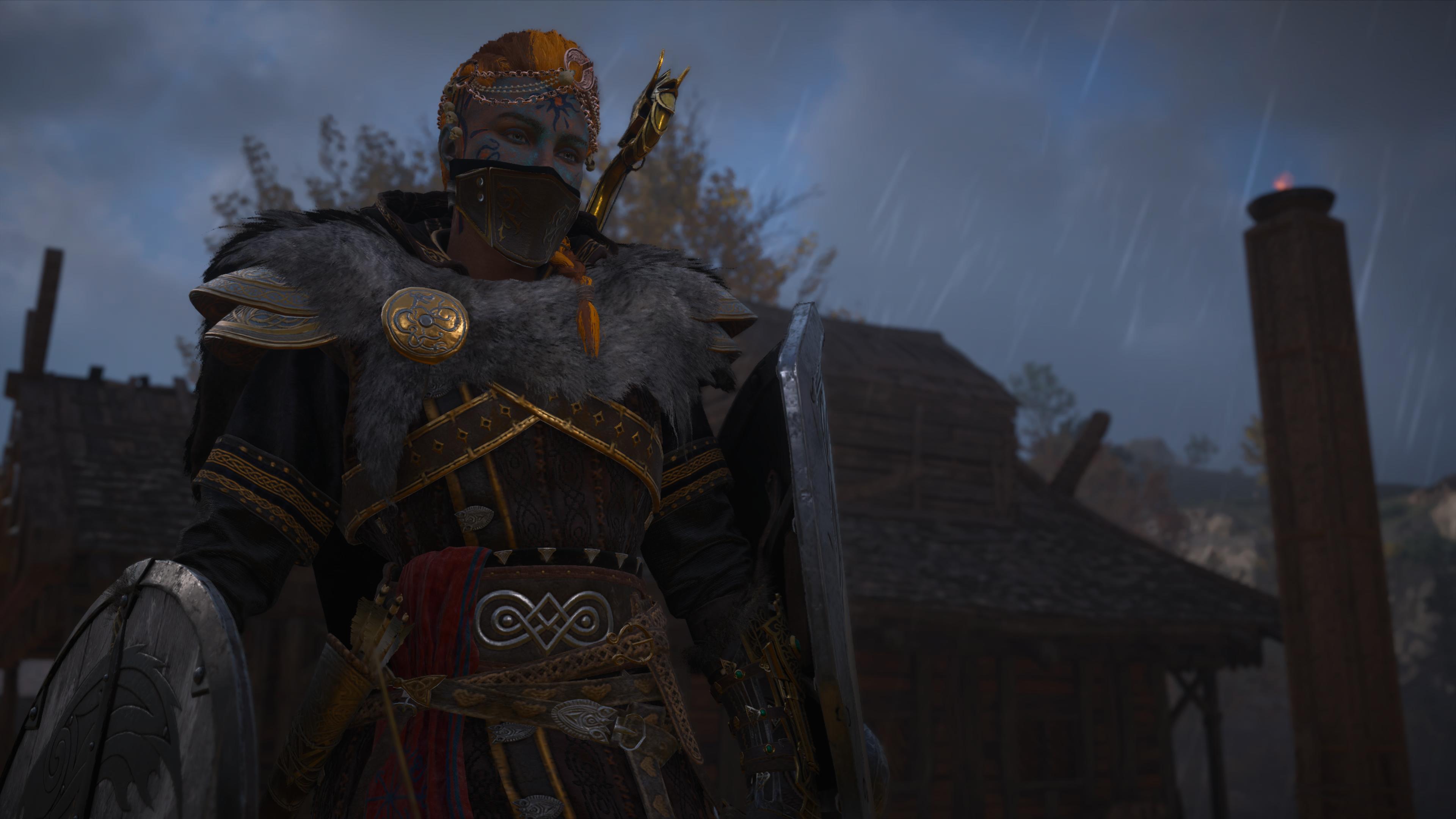Assassin's Creed Valhalla: The Siege of Paris nails the bleak and cruel landscape of 9th century Francia
But it's missing that certain... je ne sais quoi.

Assassin's Creed Valhalla has taken me to the foggy moors of England, the distant shores of Vinland, and even the verdant slopes of Ireland. But its newest destination, the war-torn Kingdom of Francia, sharply deviates from these wild and gorgeous landscapes. It's a ravaged, dirty, and cruel place where fields and towns are burned and destroyed. Paris has a dedicated plague distract, and enormous swarms of rats chase you hoping for a tender Viking morsel—just like in A Plague Tale: Innocence. Despair is rife in Francia and the Elgring Clan's leader, Sigfred, embodies it. After his brother was killed, Sigfred decided it was high time that he lay siege to Paris and that his clan would not be bought.
After several dozen hours wielding Eivor's diplomacy skills and making difficult decisions to decide the fate of England, The Siege of Paris forces you to act rather than talk your way out of problems. Infiltration missions are central to the plot as you quickly realise that the French can't—or rather, won't—be reasoned with. Eivor's reputation precedes her, yet the kingdom of Francia seems unmoved by her plight and her insistence on parlaying with Charles the Fat makes Sigfred question your allegiances.
The Siege of Paris feels like the most Assassin's Creed entry in Valhalla so far, as it really wants you to complete some Assassination Events during black-box Infiltration Missions. These are classic Assassin's Creed missions where you'll need to stealthily collect information and avoid being seen by throngs of guards as you pursue clues that will help you reach your target. Eavesdropping on soldier's conversations and searching for keys in rat-infested sewers provides a lot of environmental storytelling and really highlights the grim state of affairs in Paris. Of course, you can just play it the old fashion way and go in dual-wielding hammers, but it really does call for subtlety.
The Hidden Ones are also present in Francia, dubbed The Bellatores Dei. Seeking out these individuals is considerably less time-consuming than in the base game or Wrath of the Druids DLC. It feels more like you're hunting them and revealing secrets organically, as opposed to following what's essentially a big flow chart.
Rebel missions are a new activity you can complete, where you'll assist Pierre in building a new and powerful resistance that will counter Charles the Fat's armies. They're a good way to practice stealth ambushes and you'll be rewarded with silver that you can spend on improving your rebel fighters, as well as picking up cosmetic items and runes. Gaining Infamy goes a long way towards success in the final hours and even more about the Hidden Ones will be revealed. They are pretty repetitive, though, but you can mix things up by completing them with melee or ranged support, or solo if you wish. Pierre isn't just after silver, however. The Siege of Paris is about subterfuge and hidden agendas—staying in power at all costs is the name of the game.
For the first time, I felt out of my depth playing as Eivor. No matter what I did 'right'—that is, what I was told to do—nobody ever seemed hopeful or pleased with the progress I made. I was betrayed and belittled by friend and foe, and the majority of 'choices' feel inconsequential in the early half. Truly, you realise how much of a pawn Eivor is in a war that she needn't have joined. The story feels wooden and linear for the first few hours, which takes away from the tension of Infiltration Missions. There's a bigger picture here, but Eivor's role isn't as clear in Paris. I'm used to feeling invincible with Eivor as I chop my way around England and Ireland, stomping on enemy faces and petting all the cats I could find. Now I feel a little like I'm being taunted by the French knights in Monty Python and the Holy Grail.
What makes The Siege of Paris difficult to put down though is its miserable core. Notable figures—The Bellatores Dei—are performing barbaric deliverance rituals under the guise of Christianity, and even moving against the Queen of Francia. Watching Charles the Fat's mind descend into paranoia conveys how unrealistic Eivor's hope of a truce is. As always, there's the issue of sovereignty and succession, with several characters jostling for power in one way or another.
The biggest gaming news, reviews and hardware deals
Keep up to date with the most important stories and the best deals, as picked by the PC Gamer team.

The good news is, you only need to have a power level of 200 to access The Siege of Paris and you don't need to have completed the main story, though you will need to have completed either Grantebridgescire or Ledecestrescire to begin. Much like in Wrath of the Druids, the enemy scaling has been done pretty well. I kept getting my ass kicked by Frankish Knights on horses and the Frankish Goliath equivalents are way more OP than in England. I've been caber tossed across enough of Francia, merci beaucoup.
Given that The Siege of Paris is much shorter than Wrath of the Druids, it feels more like a dread-filled tutorial island. There are more tutorials than usual and everything feels like a test for something bigger. It might be that we see more black-box infiltration and siege missions in Discovery Tour: Viking Age and beyond. Valhalla feels like the most non-AC game in the series, but The Siege of Paris is a nice little link back to the old games. It's still just as funny in Paris as it was in the original Assassin's Creed when townsfolk exclaimed in wonder when they saw your scaling buildings or simply running.
If you're ready for an Assassin's Creed journey without the pomp and circumstance of Mercia, then following in Ragnar's footsteps is the sure-fire way to go. It's a starkly bleak change of pace for Valhalla, but this nosedive into misery is oddly refreshing. There's no real feeling that everything is going to be okay in The Siege of Paris. If there's anything European cinema has taught us it's that life isn't all sunshine and roses. Sometimes there's death, defeat and constant struggle, but it doesn't mean a well-rounded ending for all can't be found. True historical accuracy aside, if you want a glimpse into the reality of the Viking vs Frankish conflict of the 9th century, The Siege of Paris is a beautifully grim portrayal.
The first three games Lauren played on PC were Star Wars: X-Wing, Zoo Tycoon and Barbie Fashion Designer, which explains her love of all things space, strategy and aesthetically pleasing. Lauren recently took over as PC Gamer's Guides Editor after three years of writing many dozens of Destiny 2 guides at VG247, as well as casually trying to shoehorn in The Witcher 3 articles wherever possible. When she's not trying to force everyone to play as a Warlock in Destiny 2, Lauren is either mastering her SEO abilities to help smash the competition, or patting one of her red sons.

